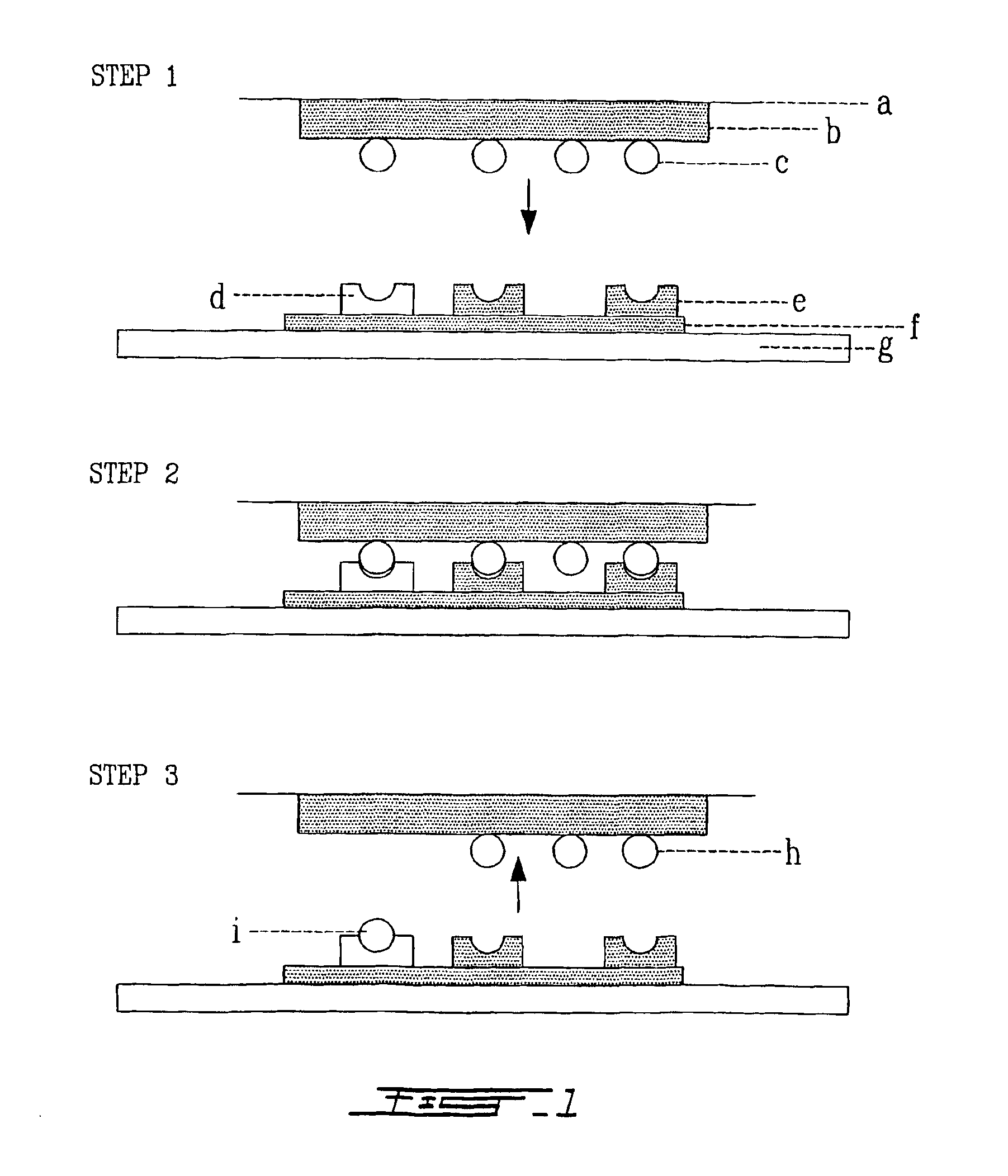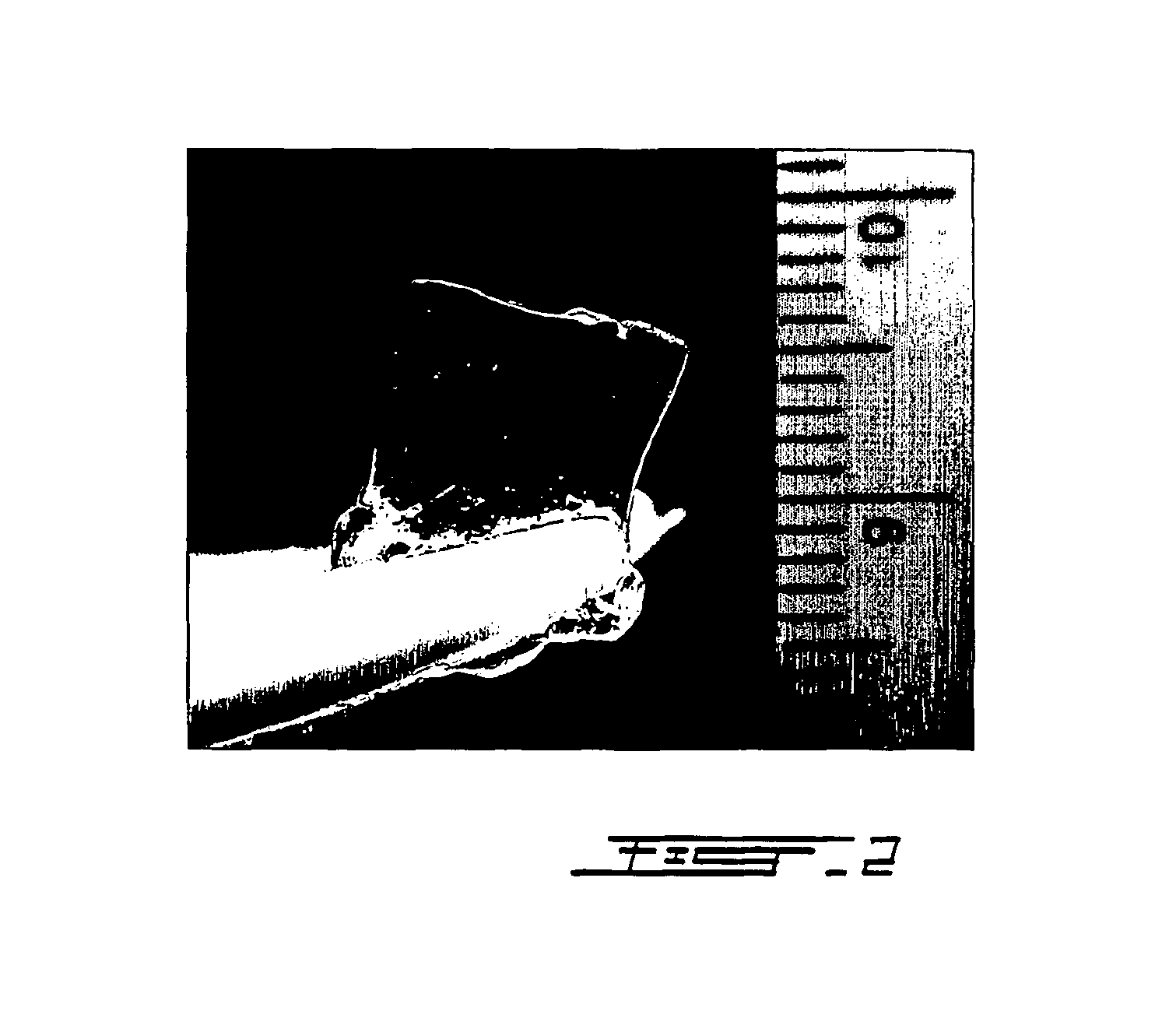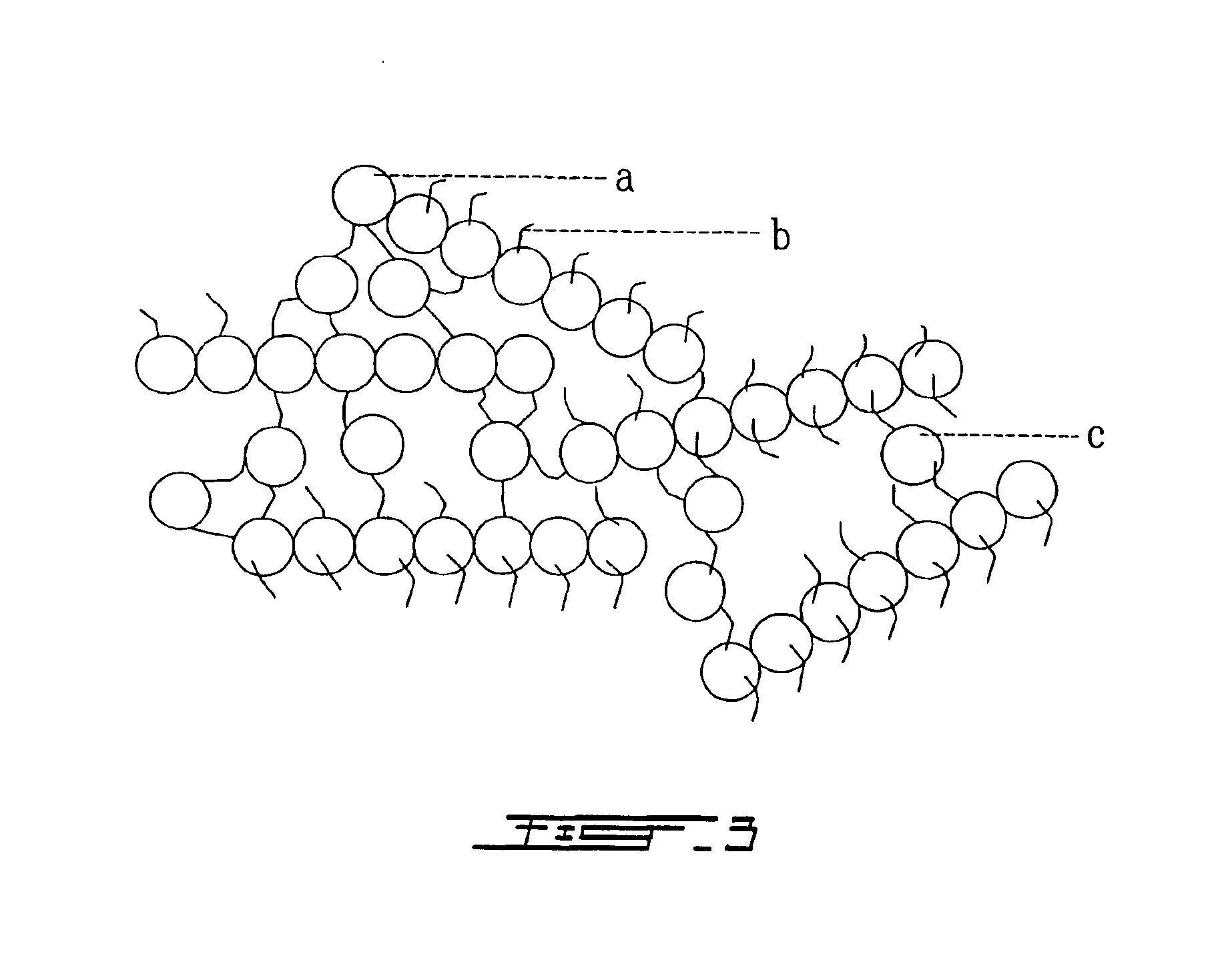Polyubiquitin based hydrogel and uses thereof
- Summary
- Abstract
- Description
- Claims
- Application Information
AI Technical Summary
Benefits of technology
Problems solved by technology
Method used
Image
Examples
example i
The Use of PUH for Realization of Molecular Techniques on Specimen Deposited on Microscope Slide
[0136]The PUH can be used as a device replacing the humid chamber and the slide cover in ISH technique (FIG. 1). The PUH is equilibrated with a sodium salt buffer usually citrate buffer (6×SSC). A mixture of poly(Adenosine)16 and oligonucleotides specific to the targeted gene are adsorbed to the PUH surface. The specimen, which is either a tissue section, individual cells or nucleic acid, is mounted on a support such as microscope slide. The PUH mounted on a plastic support is then applied on the specimen. The microscope slide is incubated at 95° C. for 2 min and cooled to the hybridization temperature. The incubation time for hybridization is determined empirically and is sufficient to allow the oligonucleotides to hybridize with the target gene. After hybridization the PUH is peeled off from the microscope slide and replaced by a new PUH previously equilibrated with a stringent salt buf...
example ii
Preparation of Biosensors with PUH
[0137]The monoubiquitin (1 unit) or polyubiquitin (2 to 6 units) was suspended in different pH buffers: PBS (potassium phosphate 100 mM, 150 mM NaCl, pH 7,4), Borate buffer (boric acid 50 mM, 100 mM NaCl, pH 8,0) or Carbonate buffer (sodium bicarbonate 100 mM, pH 9,4) at concentration ranging between 1 to 100 mg / ml. A polyethylene bis-p-nitrophenyl carbonate (PEG) solution ranging between 10 to 100 mg / ml suspended in respective above buffers was mixed in 1:1 proportion to the ubiquitin solution and incubated 2 to 16 hours at room temperature. High concentration of mono or polyubiquitin (>5% w / v) hydrogels polymerized in carbonate buffer gave solid transparent polymers as shown in FIG. 2. FIG. 3 illustrates the molecular network relation between units of ubiquitin during gel formation. To perform ultrastructural analysis after polymerization, the PUH were fixed in 4% v / v formaldehyde in cacodylate buffer (100 mM, pH 7,3). They were rinsed three times...
example iii
Optical Properties of PUH
[0139]Hexamer and monomer of ubiquitin suspended in PBS pH 7.4 were submitted to a optical density scan (absorbency) ranging between 220 to 600 nm with 1 nm stepwise. Bovine albumin serum (BSA) was used as a control. Polyubiquitin showed a distinctive absorbency pattern in UV spectrum whereas monomer of ubiquitin has a similar absorbency profile of BSA with a typical absorbency peak near 280 nm (FIG. 7). Also, PUH show a constant transmittance of light at different wavelength, while BSA gels gives variable transmittance of light (FIG. 8). The PUH was then introduced in a quartz cell in presence of PBS pH 7.4. The spectrophotometer cell holder temperature was controlled by a circulating bath. Variation of temperature from 20° C. to 60° C. was performed by 10° C. stepwise. The biopolymer was stabilized 5 minutes at each temperature steps before full spectrum scan was performed. The PUH absorbency profile was similar to the polyubiquitin in solution. The optica...
PUM
| Property | Measurement | Unit |
|---|---|---|
| Time | aaaaa | aaaaa |
Abstract
Description
Claims
Application Information
 Login to View More
Login to View More - R&D
- Intellectual Property
- Life Sciences
- Materials
- Tech Scout
- Unparalleled Data Quality
- Higher Quality Content
- 60% Fewer Hallucinations
Browse by: Latest US Patents, China's latest patents, Technical Efficacy Thesaurus, Application Domain, Technology Topic, Popular Technical Reports.
© 2025 PatSnap. All rights reserved.Legal|Privacy policy|Modern Slavery Act Transparency Statement|Sitemap|About US| Contact US: help@patsnap.com



